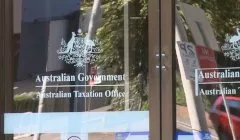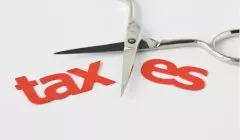Earn
Why your tax return could be better than usual this year
If there was ever a year when it was worth doing your taxes on time, it’s this one.
Why your tax return could be better than usual this year
If there was ever a year when it was worth doing your taxes on time, it’s this one.

For those who need an extra reason to submit their tax return before the October deadline, director of tax communications at H&R Block Mark Chapman has four words of encouragement: Stage 2 tax cuts.
Mr Chapman said that these tax cuts, introduced in October by last year’s federal budget, mean that those who get their taxes in on time should expect a “bumper” return.
“That’s because of the low and middle income tax offset and also the change in tax thresholds from 1 July 2020,” he said.
Mr Chapman said that an individual on an income of around $80,000 should expect to come away with a tax balance that’s about $1,500 better than it would be otherwise, regardless of whether it’s a return or a reduction in the amount of tax payable.

Of that $1,500, Mr Chapman explained that around $1,080 was due to the new low and middle income tax offset. The way this offset works is relatively simple, but also convoluted.
If your income is less than $126,000, you’ll get at least some or all of the offset. For those who earn less than $37,000, the offset caps out at $255. If you earn between $37,000 and $48,000, the offset will increase up to a maximum of $1,080.
Those with annual incomes of between $48,000 and $90,000 will receive the full offset. However, those who earn more than $90,000 will see the offset gradually fade out.
If you earn more than $126,000 a year, you won’t come away with any offset on your tax payable for the year.
Importantly, “you MUST lodge your tax return in order to get the offset”, Mr Chapman said.
This offset isn’t the only reason to raise your expectations when it comes to your tax return this year.
Mr Chapman noted that the other half of the Stage 2 tax cuts “arises from the change in tax thresholds”.
Originally due to come into effect in the 2023–2024 financial year, these changes see the 19 per cent tax threshold shift from $37,000 to $45,000.
Meanwhile, the previous $37,001–$90,000 tax bracket is set to be replaced with a new $45,001–$120,000 one.
Australians who fall into this category when it comes to annual income will be subject to a 32.5 per cent tax rate.
Finally, those who earn more than $120,001 will face a higher 37 per cent tax bracket.
As a result of these shifts in Australia’s various tax brackets, those who earned close to the upper or lower limits of a given bracket may now have changed brackets.
Since these new tax rates only apply to income earned after the 1st of December 2020 onwards, Mr Chapman estimated that an Australian on a salary of around $80,000 should expect around $400 in tax back.
While taxes are a subject that gets people talking about how much they’re, the combined impact of these two measures seems primed to ensure that 2021 is a year when the opposite is the case.
About the author

About the author


Tax refund
How a $140k 'repair' became a tax strategy triumph and competitive edge
A Sydney investor secured an immediate deduction for $140,000 in rental property works after the ATO initially treated the spend as capital. In a market where the ATO says most rental schedules ...Read more

Tax refund
The ATO will be focusing on these four issues at tax time
The tax office has indicated it will be scrutinising areas where taxpayers are known to make mistakes. Read more

Tax refund
More than half of Aussies get stressed at tax time, survey finds
Many taxpayers feel that they may be missing out on deductions in their tax returns. Read more

Tax refund
Engage or face firmer action, ATO warns taxpayers with unpaid debts
The tax office is offering support and assistance to those with overdue debts. Read more

Tax refund
How to prepare for your tax return
While the end of the financial year is still a couple of months away, you can take action now to help maximise your tax return. Read more

Tax refund
What issues will be on the ATO’s radar this year?
H&R Block has outlined two main areas that the tax office is expected to focus on. Read more

Tax refund
How does the expanded low and middle income tax offset work?
Millions of taxpayers will receive hundreds of dollars more in their tax return this year. Read more

Tax refund
Why 90% of taxpayers could face a higher tax bill next financial year
A tax offset for over 10 million Aussies may not be extended in next month’s budget. Read more

Tax refund
How a $140k 'repair' became a tax strategy triumph and competitive edge
A Sydney investor secured an immediate deduction for $140,000 in rental property works after the ATO initially treated the spend as capital. In a market where the ATO says most rental schedules ...Read more

Tax refund
The ATO will be focusing on these four issues at tax time
The tax office has indicated it will be scrutinising areas where taxpayers are known to make mistakes. Read more

Tax refund
More than half of Aussies get stressed at tax time, survey finds
Many taxpayers feel that they may be missing out on deductions in their tax returns. Read more

Tax refund
Engage or face firmer action, ATO warns taxpayers with unpaid debts
The tax office is offering support and assistance to those with overdue debts. Read more

Tax refund
How to prepare for your tax return
While the end of the financial year is still a couple of months away, you can take action now to help maximise your tax return. Read more

Tax refund
What issues will be on the ATO’s radar this year?
H&R Block has outlined two main areas that the tax office is expected to focus on. Read more

Tax refund
How does the expanded low and middle income tax offset work?
Millions of taxpayers will receive hundreds of dollars more in their tax return this year. Read more

Tax refund
Why 90% of taxpayers could face a higher tax bill next financial year
A tax offset for over 10 million Aussies may not be extended in next month’s budget. Read more










